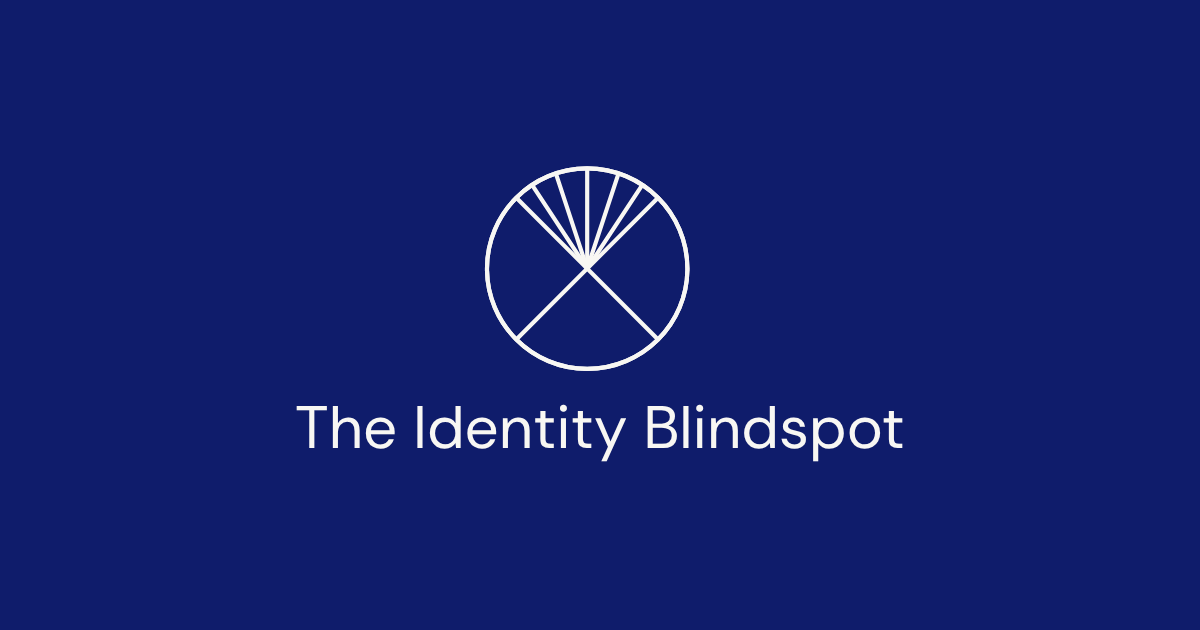
Leadership identity is the outermost and most adjustable layer of self-awareness. It shapes how you see yourself, how you lead, and how others experience you. When your self-story no longer fits your role, it becomes a blindspot — one that quietly limits growth until you realign who you are with what your leadership demands today.

Ask any leader who they are, and most will answer with what they do.
“I’m a CEO.”
“I’m the fixer.”
“I’m the connector.”
But beneath those titles sits something more powerful — your identity.
As Blindspotting author Martin Dubin, PhD, writes:
“Identity is the nametag you wear as you make your way in the world.” — Martin Dubin, PhD, Blindspotting: How to See What’s Holding You Back as a Leader
Identity shapes how you make decisions, handle pressure, and define success. Yet few leaders pause to ask:
Is the story I’m telling about myself still true — and still serving me?
That’s where the Blindspotting Self-Awareness Model begins. Identity sits on the outermost layer — the most visible, actionable, and adaptable level of leadership growth.
An identity blindspot forms when who you believe you are no longer matches what your team, role, or company needs from you.
You might be:
As Dubin notes,
“An identity blindspot can stop career momentum in its tracks.” — Martin Dubin, PhD
It’s not failure — it’s friction.
That quiet gap between self-story and current reality can erode trust, slow growth, and make even capable leaders feel misaligned.
Of all six Blindspotting areas — Identity, Behavior, Traits, Intellect, Emotion, and Motive — identity is the easiest to recognize and the quickest to realign.
That’s because it shows up daily in how you:
Self-awareness at this level has more measurable impact on leadership effectiveness than even advanced training, because it influences every decision and relationship you manage.
Identity feels stable — but it’s surprisingly fluid. When your context changes, your identity must evolve with it.
What defined you five years ago — the operator, the closer, the caretaker — may not serve you now.
Shifting identity isn’t about pretending to be someone new.
It’s about aligning who you are with what your role requires today.
Learn more about the Identity Blindspot in this podcast.
The Blindspotting framework is built on lived experience.These stories from the book bring the Identity Blindspot to life:
Her humility made her indispensable — and invisible. Redefining visibility as stewardship helped her grow.
His “hero founder” identity drove success — until it trapped him. His turning point came when leadership became about creating space for others.
Helen’s talent made her invaluable — but misaligned. Herstory shows how awareness isn’t always about climbing higher; sometimes it’s about choosing the role that truly fits.
Fernando’s entrepreneurial identity thrived in a startup but clashed in a corporate world. His story shows how attachment to an old identity can derail success in a new system.
Each story underscores that your success depends not just on what you do — but on who you believe you are.
Blindspotting Performance Coaching begins with clarity. Leaders explore how they describe themselves, how others describe them, and where those views diverge.
The Blindspotting Assessment acts as a mirror — not a test. It sparks reflection and helps uncover where identity and role have drifted out of sync.
Through guided discussion and feedback, leaders realign their self-story with their current context. The result is tangible:
When identity is aligned:
“When your identity evolves, your leadership sharpens.” — Martin Dubin, PhD
Adapted from Blindspotting: How to See What’s Holding You Back as a Leader.
1. Finish this sentence as many ways as you can:
2. Make two lists:
3. Map your identity to your current role.
4. Look for friction.
5. Ask others.
When stepping into a new role, most leaders focus on external onboarding — learning systems, structures, and people.
But the most successful transitions begin with internal onboarding — understanding who you need to become.
Instead of asking: “What’s the culture here?”
Ask:
As Martin Dubin notes, this kind of psychological onboarding builds authenticity, confidence, and clarity from day one.
“When you change how you see yourself, you change how you behave — and that changes how others see you.” — Martin Dubin, PhD
Explore Coaching for Individuals and Teams →
Blindspots don’t mean you’re off track — they mean you’re human. But the best leaders are the ones who see themselves clearly enough to evolve in real time.
That’s what Blindspotting Performance Coaching delivers — turning insight into action and alignment into momentum.
Explore Coaching for Individuals and Teams →
Blindspotting → Identity → Behaviors→ Traits → Intellect → Emotion → Motive →









